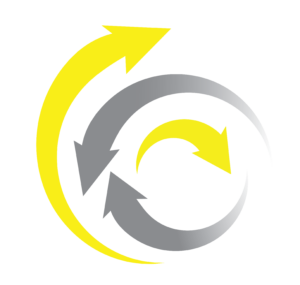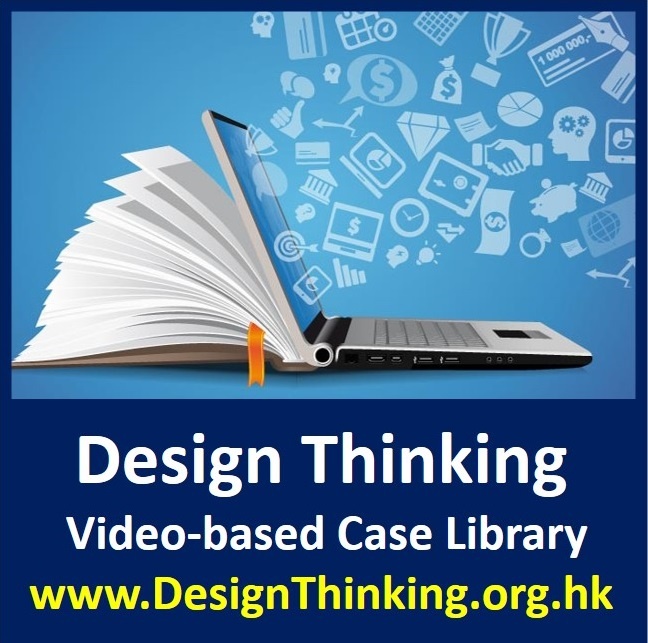In recent years, Design Thinking (DT) has garnered substantial interest and recognition as a powerful problem-solving methodology, appealing to both industry leaders and academic scholars. Esteemed publications such as The Economist, Harvard Business Review, The Wall Street Journal, and The New York Times have extensively covered the subject (Böckle & Kouris, 2023).
Furthermore, Harvard Business Review consolidated its insights by publishing “HBR’s 10 Must Reads on Design Thinking” in 2020, which selected ten pivotal articles from over thirty case studies conducted over the past two decades (Clayton et al., 2020).
Beyond a global perspective, our impactful Design Thinking initiatives have catalyzed significant breakthroughs across business, social sectors, education, and public services in both Hong Kong and Mainland China. These projects have not only advanced local development but have also set benchmarks for innovation on a global scale (Chung & Chung, 2018; Kan et al., 2019; Lam, 2019, 2020, 2021; Stefaniak, 2019).
Experts in Design Thinking and artificial intelligence, Stackowiak and Kelly, present over a hundred prevalent Design Thinking project topics across 19 industries in their influential book, “Design Thinking for Software and AI Projects” (2020). This comprehensive guide is meticulously tailored to assist managers in pinpointing the most pertinent focus areas, thereby amplifying their company’s innovative capabilities through Design Thinking methodologies.
Below is a detailed breakdown of the 19 industries, organized into six sectors, each accompanied by their respective project focuses. This strategic segmentation is designed to offer executives a clear and actionable roadmap to effectively harness the potential of Design Thinking.
Table of Contents
| Category A: Primary and Resource-Based Industries | |
| 1 | Agribusiness |
| 2 | Construction and Mining |
| 3 | Oil and Gas |
| Category B: Manufacturing and Utility Industries | |
| 4 | Manufacturing – Consumer Packaged Goods |
| 5 | Manufacturing – Equipment and Vehicles |
| 6 | Utilities |
| 7 | Transportation |
| Category C: Financial Industries | |
| 8 | Banking and Portfolio Management |
| 9 | Insurance |
| Category D: Healthcare Industries | |
| 10 | Healthcare Payers |
| 11 | Healthcare Providers and Senior Living |
| 12 | Pharmaceuticals and Medical Devices |
| Category E: Consumer Goods and Services | |
| 13 | Hospitality |
| 14 | Media and Entertainment |
| 15 | Property Management |
| 16 | Retail |
| 17 | Telecommunications |
| Category F: Knowledge-Based Services | |
| 18 | Education and Research |
| 19 | Legal Firms and Professional Services |
Industry #1

Agribusiness
Agribusiness involves a range of activities focused on optimizing the cultivation and distribution of crops and livestock. Design Thinking projects in this industry could enhance production efficiency, reduce resource usage, streamline supply chains, improve collaborative partnerships, and refine sales and marketing strategies to boost profitability and sustainability.
- (01) Improving production, quality, and yield, including optimized planting, growing, and harvesting of crops and care of livestock
- (02) Minimizing usage of pesticides and antibiotics and other natural resources such as water
- (03) Supply chain optimization, including just-in-time (JIT) delivery of harvested crops and livestock, minimizing storage and associated costs and improving quality and time to market
- (04) Improving partnerships between growers, livestock owners, suppliers, and processors
- (05) Improving sales and marketing with the delivery of the right products to market at the right time, improving revenue, and reducing surplus
Industry #2

Construction and Mining
In the construction and mining sectors, Design Thinking can significantly enhance operations by focusing on key areas: improving safety and compliance, optimizing crew scheduling and resource management, and enhancing project delivery and quality. These initiatives help increase bid win rates and profitability, ensuring more efficient and competitive business practices.
- (06) Ensuring safety to meet regulations and reducing the need for worker compensation payouts
- (07) Providing optimal crew scheduling and required training
- (08) Optimizing resource planning and utilization of equipment and parts for minimizing downtime
- (09) Improving the quality of work and on-time delivery of milestones and projects
- (10) Improving win rates and profitability through more accurate bidding for new jobs
Industry #3

Oil and Gas
In the oil and gas industry, Design Thinking initiatives can significantly improve exploration accuracy with advanced geological data analysis and optimize equipment maintenance at all stages. Streamlining supply chain and human resource management, enhancing environmental safety protocols, maximizing real estate value, and fostering better public and regulatory relations are also essential focuses to drive industry advancements.
- (11) Improving exploration results through more insightful and timely analysis of geologic data
- (12) Enabling optimal maintenance of upstream, mid-stream, and downstream equipment
- (13) Optimizing supply chains and human resources
- (14) Improving management of environmental risk and safety
- (15) Maximizing value of real estate owned and under consideration for purchase
- (16) Improving public and regulator perception
Industry #4

Manufacturing – Consumer Packaged Goods
In the consumer packaged goods industry, Design Thinking can enhance understanding of consumer preferences, boost brand awareness, innovate market entry, optimize production, and improve margins while ensuring product quality. These efforts aim to increase efficiency and customer satisfaction.
- (17) Improving methods to understand changing consumer preferences
- (18) Improving brand awareness (through promotions, advertising, and product placement) and the value of brands
- (19) Exploring new ways of going to market and delivery of goods
- (20) Optimizing product production and supply chain based on historical information and projected demand
- (21) Ensuring product quality while maintaining/improving margins
- (22) Improving consumer satisfaction in call center interactions
Industry #5

Manufacturing – Equipment and Vehicles
In the equipment and vehicle manufacturing sector, Design Thinking can streamline operations by tailoring product mixes to evolving customer needs, enhancing support services while reducing costs through predictive maintenance, and improving product safety via automation. Additionally, optimizing client production output and ensuring just-in-time delivery are key focus areas to boost efficiency and satisfaction.
- (23) Improving product mix based on changing customers’ requirements
- (24) Adding support offerings and reducing support costs and warranty funding through improved product quality and predictive maintenance
- (25) Improving safety related to the usage of products (e.g., through increased automation)
- (26) Optimizing customers’ production output
- (27) Ensuring just-in-time delivery of parts and components in the supply chain
Industry #6

Utilities
In the utilities sector, Design Thinking can enhance service delivery by managing demand through incentives, maximizing availability with preventive maintenance, and optimizing supply chains and staffing. Further, improving resilience against environmental challenges, meeting strict regulatory standards, enhancing safety, and better managing infrastructure and real estate are critical areas of focus.
- (28) Managing demand by offering incentives and other proactive measures
- (29) Maximizing utility availability through improved preventive maintenance
- (30) Optimizing their supply chain, equipment, and staffing
- (31) Maintaining service during unusual weather and other environmental events
- (32) Meeting more stringent regulatory and environmental requirements
- (33) Improving worker and facility safety
- (34) Improving management of right-of-way and real estate locations
Industry #7

Transportation
In the transportation sector, Design Thinking initiatives focus on optimizing routes and equipment schedules to meet demand efficiently, enhancing equipment availability through predictive maintenance, and reducing traffic congestion. Additionally, improving supply chain operations for timely parts replacement, increasing safety in compliance with regulations, and revamping customer loyalty programs to boost revenue and decrease churn are critical strategies to enhance service and operational effectiveness.
- (35) Optimizing routing of equipment and operators to match passenger and freight demands, meet schedules, and mitigate costs
- (36) Improving the availability of needed equipment through predictive maintenance
- (37) Reducing traffic congestion whenever possible
- (38) Optimizing the supply chain for just-in-time availability of replacement parts and supplies
- (39) Improving safety consistent with existing and emerging regulations
- (40) Modifying customer loyalty programs to increase revenue and reduce churn
- (41) Improving right-of-way maintenance and management
Industry #8

Banking and Portfolio Management
In the banking and portfolio management sectors, Design Thinking can revolutionize service delivery by enhancing customer engagement and product uptake, optimizing the distribution of physical assets such as branches and ATMs, and improving inter-device information sharing. Additionally, strategies to reduce financial risks and detect illicit activities more swiftly, along with optimizing asset performance, are crucial for advancing operational efficiency and security.
- (42) Improving customer uptake of products and services across multiple financial offerings
- (43) Understanding and increasing customer interactions and information sharing across devices and physical locations
- (44) Optimizing staffing and physical locations (such as branch bank locations and locations of ATMs)
- (45) Reducing exposure to risk and determining illicit activities faster
- (46) Optimizing the performance of financial assets
Industry #9

Insurance
In the insurance industry, Design Thinking can enhance operational effectiveness by accelerating the payment process for legitimate claims and improving fraud detection. Additionally, refining risk-based pricing, enhancing mobile service capabilities, and exploring new business areas like consulting and specialty products are crucial for adapting to evolving market demands and enhancing customer satisfaction.
- (47) Providing faster payment of legitimate claims to their best customers
- (48) Detecting fraudulent claims sooner
- (49) More accurately pricing offerings based on risk profiles, property utilization, and location
- (50) Providing better and faster services through customers’ mobile devices (including leveraging images captured by clients on their devices)
- (51) Enabling entry into new business areas, such as consulting and specialty products
Industry #10

Healthcare Payers
In the healthcare payer sector, Design Thinking is pivotal for optimizing care quality with providers to reduce treatment costs and improve patient outcomes. Initiatives can also focus on accurately predicting care costs, speeding up payments for legitimate claims, enhancing fraud detection, and bolstering mobile services. Additionally, refining marketing strategies is key to enhancing customer engagement and satisfaction.
- (52) Optimizing quality of care with partner healthcare providers to minimize costs of treatments and improve outcomes
- (53) More accurately predicting the cost of care for insured groups
- (54) Providing faster payment of legitimate claims
- (55) Detecting fraudulent claims sooner
- (56) Improving services available through customers’ mobile devices
- (57) Improving the effectiveness of marketing and promotions
Industry #11

Healthcare Providers and Senior Living
In the healthcare and senior living sectors, Design Thinking focuses on improving care quality and patient quality of life, enhancing monitoring in both inpatient and in-home settings, and optimizing staffing to balance cost control with quality care. Enhancing digital communication with patients and families, maximizing facility utilization, and efficient management of supplies and equipment are also crucial for operational excellence.
- (58) Improving quality of care, care planning, and quality of life
- (59) Improving inpatient and in-home patient/guest monitoring
- (60) Optimizing staffing to control costs while maintaining quality
- (61) Improving the sharing of information with patients, guests, and families through online/mobile device interactions
- (62) Optimizing utilization of facilities
- (63) Optimizing the management of supplies and equipment
Industry #12

Pharmaceuticals and Medical Devices
In the pharmaceuticals and medical devices industry, Design Thinking can accelerate clinical trials, enabling faster success determination or early failure recognition at reduced costs. It also focuses on monitoring real-time drug/device effectiveness and early risk detection, combating counterfeiting, accurately predicting demand, assessing promotional strategies, and enhancing sales and distribution management. These initiatives are critical for improving patient outcomes and operational efficiency.
- (64) Enabling faster clinical trials (proving success or failing sooner at lower cost during research)
- (65) Understanding the effectiveness of drugs/devices as patients utilize them and identifying emerging risks sooner
- (66) Determining counterfeiting of drugs or devices sooner
- (67) Predicting demand for drugs/devices and determining promotion effectiveness
- (68) Improving management of sales and distribution
Industry #13

Hospitality
In the hospitality industry, Design Thinking is employed to optimize room occupancy and pricing strategies, enhance customer service, food, and entertainment options, and ensure seamless reservation management across various platforms. Additionally, efforts focus on improving the returns from customer loyalty programs, optimizing staffing efficiency, and effectively managing facilities and supplies to enhance guest experiences and operational efficiency.
- (69) Optimizing room occupation and pricing
- (70) Improving customer service, food, and entertainment offerings
- (71) Providing seamless reservation management across systems and mobile devices
- (72) Improving financial return from customer loyalty programs
- (73) Optimizing locations and management of facilities and supplies
Industry #14

Media and Entertainment
In the media and entertainment sector, Design Thinking focuses on fostering innovation in content creation, acquisition, and management to stand out in a competitive market. It also aims to maximize advertising revenue and streamline ordering and ticketing processes. Enhancing service reputation through improved customer interactions, expanding offerings in innovative channels, and optimizing venue management for increased revenue and customer satisfaction are additional key areas of focus.
- (74) Enabling differentiated content creation, acquisition, and management
- (75) Maximizing advertising effectiveness, and improving ordering/ticketing across offerings
- (76) Improving service reputation (ease of self-service, installation and repair scheduling, complaint handling)
- (77) Growing and developing offerings in non-traditional channels
- (78) Enabling venue management excellence and revenue optimization through optimized traffic flows and seating options
Industry #15

Property Management
In property management, Design Thinking is pivotal for aligning property portfolios with current and future market demands. It enhances the assessment of property values, provides insights into demographic shifts affecting property relevance, and reduces high-risk investments. Additionally, it aids in understanding the causes and patterns of property vacancies, enabling more strategic management and operational decisions.
- (79) Improving their property portfolio to match current and projected future demand
- (80) Improving their assessment of the true value of properties
- (81) Gaining a better understanding of changing demographics (and its future impact on the value of properties)
- (82) Reducing investments is considered a high-risk
- (83) Improving their understanding of the causes and locations of vacancies
Industry #16

Retail
In the dynamic retail industry, Design Thinking is crucial for enhancing omnichannel shopping experiences, ensuring seamless integration across multiple platforms. It also focuses on refining store operations through optimized layouts, loss prevention, and strategic staffing. Additionally, it aids in determining the best retail and distribution locations, improving merchandise and category management, and boosting advertising effectiveness to meet evolving consumer preferences and maximize operational efficiency.
- (84) Improving omnichannel (seamless multi-channel) experiences
- (85) Improving store operations including merchandise layout, reducing merchandise loss, and providing optimal staffing
- (86) Determining optimal retail and distribution locations and providing better management of real estate
- (87) Improving merchandise and category management
- (88) Improving advertising effectiveness across all channels
Industry #17

Telecommunications
In the telecommunications sector, Design Thinking drives improvements in customer acquisition strategies, including the optimization of promotions. It also focuses on the creation of new, differentiated offerings that meet evolving customer needs. Ensuring high network quality, security, and resilience against unexpected events forms a core strategy, along with optimizing supply chains, equipment, and staffing. Additionally, enhancing worker safety is prioritized to maintain operational integrity and workforce well-being.
- (89) Improving customer acquisition (including promotions optimization)
- (90) Creating new and differentiated offerings
- (91) Maintaining and improving network quality of service and security
- (92) Predicting unusual events (e.g., weather) and managing repairs
- (93) Optimizing their supply chain, equipment, and staff
- (94) Improving worker safety
Industry #18

Education and Research
In the education and research sector, Design Thinking is strategically applied to enhance student academic performance and measure faculty impact effectively. It aids in refining the admissions process to identify ideal candidates and optimizes the usage and maintenance of facilities. Additionally, efforts focus on accelerating research outcomes, boosting the institution’s reputation, and increasing alumni engagement and financial contributions.
- (95) Improving the academic performance of students
- (96) Measuring and improving the impact of faculty
- (97) Optimizing the determination of ideal student candidates for admissions
- (98) Measuring utilization of facilities and optimizing their usage and maintenance
- (99) Shortening time to research results and improving research effectiveness and reputation of the organization
- (100) Improving alumni participation and financial support
Industry #19

Legal Firms and Professional Services
In the realm of legal and professional services, Design Thinking focuses on enhancing the speed and efficiency of discovering relevant past cases and engagements. It also aims to refine predictive analyses regarding the success of current engagements, improve practice management through better tracking of time and expenses, identify opportunities for new service offerings to expand the firm, and optimize staffing strategies to align with both current and anticipated demand.
- (101) Enabling faster discovery of past similar cases/engagements
- (102) Providing better analysis of engagements to predict the likelihood of successful outcomes
- (103) Improving practice management, including tracking time and expenses
- (104) Uncovering demand for new services that can grow the firm
- (105) Optimizing staffing and skills based on current and projected future demand
Reference
Böckle, M., & Kouris, I. (2023). Design Thinking and AI : A New Frontier for Designing Human‐Centered AI Solutions. Design Management Journal, 18(1), 20-31. https://doi.org/10.1111/dmj.12085
Chung, G., & Chung, D. (2018). WOW the Hospitality Customers: Transforming Innovation into Performance Through Design Thinking and Human Performance Technology. Performance improvement (International Society for Performance Improvement), 57(2), 14-25. https://doi.org/10.1002/pfi.21772
Clayton, M. C., Vijay, G., Indra, N., & Harvard Business, R. (2020). HBR’s 10 Must Reads on Design Thinking. Harvard Business Review Press.
Kan, S., Chung, D., & Chung, G. (2019). Customer Experience Transformation in the Aviation Industry: Business Strategy Realization through Design Thinking, Innovation Management, and HPT. Performance improvement (International Society for Performance Improvement), 58(1), 13-30. https://doi.org/10.1002/pfi.21823
Lam, D. W. (2019). Design Thinking Business Case Book 2019 (Vol. 1). Vocational Training Council, Business Discipline.
Lam, D. W. (2020). Design Thinking Business Case Book 2020 (Vol. 2). Vocational Training Council, Business Discipline.
Lam, D. W. (2021). Design Thinking Business Case Book 2021 (Vol. 3). Vocational Training Council, Business Discipline.
Stackowiak, R., & Kelly, T. (2020). Design thinking in software and AI projects: proving ideas through rapid prototyping. Springer.
Stefaniak, J. (2019). Creating Unlimited Business Opportunities for an Insurance Sales Force Through Design Thinking. In (pp. 287-304). IGI Global. https://doi.org/10.4018/978-1-7998-0054-5.ch015







![[Class Recap] Empowering Your Creativity and Innovation Power](https://i0.wp.com/www.innoedge.com.hk/wp-content/uploads/2024/04/20240329_180728-scaled.jpg?resize=218%2C150&ssl=1)
![[Class Recap] Developing Sustainable Business Models through Systems Thinking](https://i0.wp.com/www.innoedge.com.hk/wp-content/uploads/2024/04/20240328_181754-scaled.jpg?resize=218%2C150&ssl=1)
![[Class Recap] Creating Wonderful User Experience through Customer Journey Design](https://i0.wp.com/www.innoedge.com.hk/wp-content/uploads/2024/04/20240328_131024-scaled.jpg?resize=218%2C150&ssl=1)











